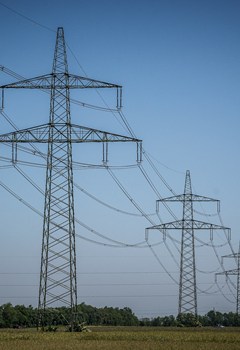Authors: A. G. Paspatis; G. C. Konstantopoulos; and J. M. Guerrero
Published in: IEEE Transactions on Control Systems Technology ( Volume: 29, Issue: 2, March 2021) https://doi.org/10.1109/TCST.2019.2955920
Date Published: 25 December 2019
Abstract:
Droop-controlled inverters are widely used to integrate distributed energy resources (DERs) to the smart grid and provide ancillary services (frequency and voltage support). However, during grid variations or faults, the droop control scheme should inherit a current-limiting property to protect both the inverter and the DER unit. In this brief, a novel structure of the recently developed current-limiting droop (CLD) controller is proposed to accomplish two main tasks: 1) guarantee current limitation with maximum power injection during grid faults and 2) rigorously guarantee asymptotic stability of any equilibrium point in a given bounded operating range of the closed-loop system for a grid-connected inverter. Since the maximum power of the DER unit can be utilized under grid faults with the proposed enhanced CLD and then inspired by the latest fault-ride-through requirements, it is further extended to provide voltage support to a faulty grid via the maximum injection of reactive power. This is achieved by simply adjusting the reactive power reference opposed to the existing control schemes that require adjustment of both the real and the reactive powers. Hence, a unified current-limiting control scheme for grid-connected inverters under both normal and faulty grids with a simplified voltage support mechanism is developed and experimentally verified in this brief.
Keywords: Current-limiting property; droop control; inverter; nonlinear control; stability analysis; voltage sags; voltage support
Insights for EnergyREV:
Solves a critical problem of the original current-limiting controller, i.e. the maximum power utilisation of the inverter interface device under grid voltage sags. By achieving this goal, the proposed approach can demonstrate that it is capable of meeting the Grid-Code requirements and additional properties, such as Fault Ride-Through (FRT), which have been imposed in several wind power systems by the energy regulators (e.g. Ofgem).
